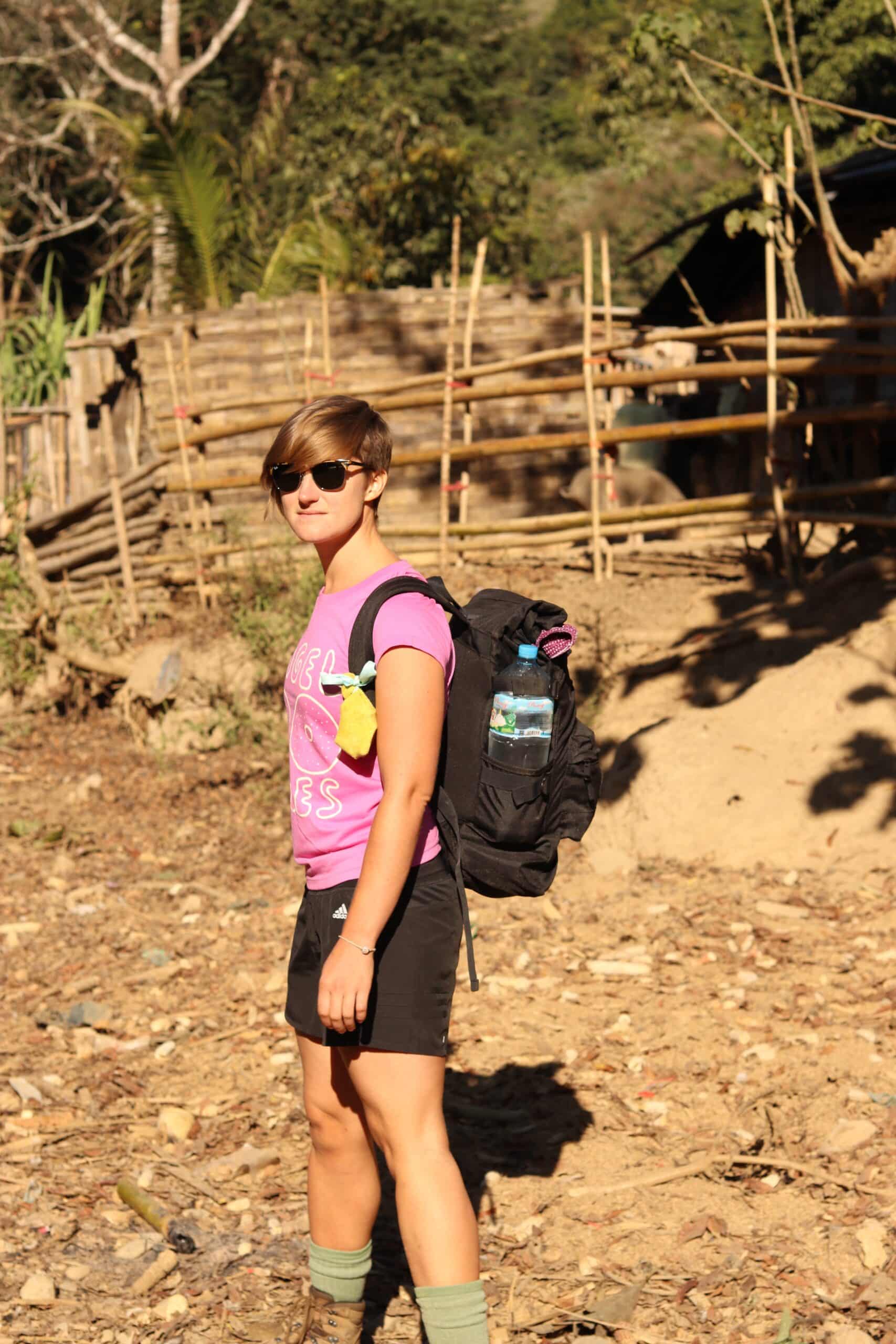The past six months have been punctuated by a series of memorable awakenings. In a literal sense, there were early mornings—flights and hikes and work that began before sunrise—the sounds of new languages, and eye-opening experiences. Metaphorically, I have painstakingly reexamined what it means to be a maker, to teach, and to engage in a completely new socio-cultural context. My eyes are widening, stretching to take it all in.
On the last morning of our Luce mid-year meeting in Thailand, I awoke to three emergency messages from my mentor, artist Araya Rasdjarmrearnsook, requesting that I help fix some issues with her installation in the Singapore Biennale before my return to Chiang Mai. Addressed to me, her gallerist, and the curators of the biennale, the emails stated ominously that she would, otherwise, be forced to withdraw her work from this significant, international exhibition. I immediately crammed my belongings into my backpack and jumped in a cab to the airport, without the faintest idea what I would do once I got to Singapore.
Walking into the darkened space in the Singapore Art Museum, I was immediately enveloped by six large projections swaying gently on white silk screens. Presented with a diversity of images—from a buffalo in agonizing death throes to a disembodied hand carefully writing in cursive—I found myself pacing the space in search of the perfect vantage point. The carefully considered arrangement of screens demanded movement throughout the space, combining disparate visual and auditory information in order to form a visceral understanding of the installation.
Since my arrival in Chiang Mai, Araya had folded me into this project for the biennale by including me as an actor in one of the videos and arranging a panel discussion about the work between a film critic and myself, even asking me to write a formal critique. I felt very close to the work and had seen it in several iterations, watching its progression over several months. As I assessed the project conceptually and technically, while mediating between Araya and the curatorial team at the same time, I found myself torn between the practical considerations of an institution, curatorial pragmatism, and an artist’s unflinching vision for the impact of her work. Araya is not concerned with salability, trends, or taste; she makes her work because it is needed, and it needs to be presented accurately.
After just a few minutes with the installation on site that day, it was clear that the main issue was the sound, or lack thereof. The curators had insisted on a system of directional speakers that were weak and tinny. In the two previous iterations of the work I had experienced, the sound was powerful and resonated in my body. It had functioned as the primary actor rather than an accompaniment to the images. After four days with numerous meetings and technical assistance, the sound finally gave power to the installation.
Working with Araya has cracked a shell within my own art making and perception. She lives her work every waking moment. Founding the Department of Multidisciplinary Art, spaying and neutering stray dogs, taking daily bicycle rides, giving alms to the monks in her village, writing, and making art are all equally important to her art practice. This realization, combined with the incredible depth, intensity, and socio-cultural import of her work, resulted in several months of inability to make my own work when I first arrived in Thailand. I would start and then quickly abandon sculptures, unable to prove their import in light of this new yardstick.
But after several months dedicated to learning Thai, teaching at the university, and assisting Araya, I have now found an allowance in these questions, a space where my art practice can be used as a means of exploration into the unknown. If this is what it feels like to open my eyes, even just a crack, I can only imagine what this next year will bring.


